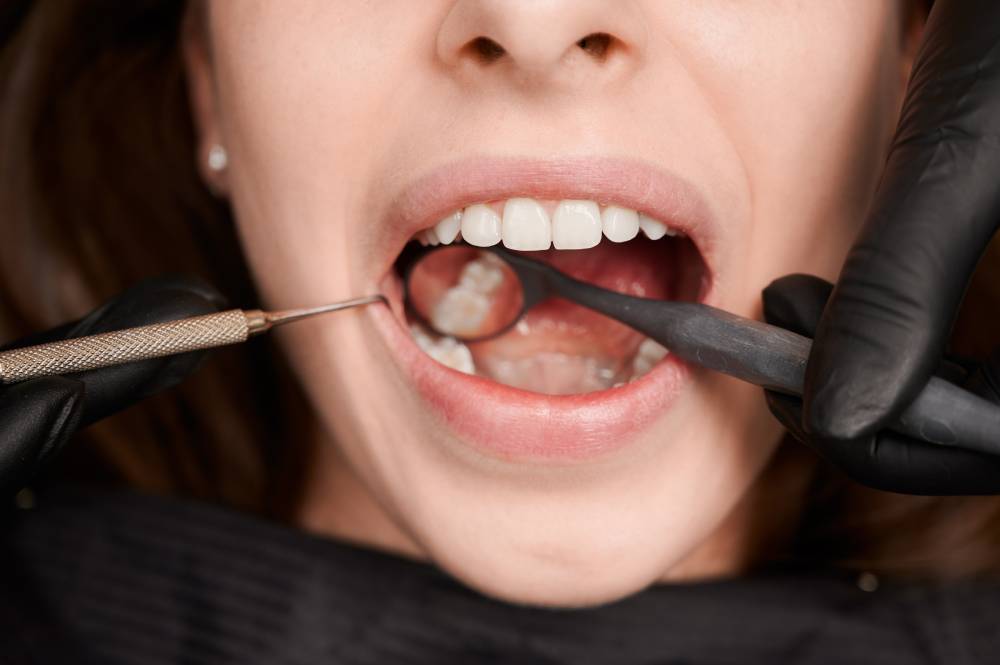Imagine regaining the confidence of a radiant smile after years of discomfort or damage. What bridges the gap between dental decay and a healthy mouth? Restorative services provide solutions that go beyond repairs, redefining oral health and aesthetics. From cavities to extensive dental restorations, the options might surprise you. Ready to discover the keys to lasting dental wellness? Let’s dive in.
Schedule a consultation for restorative dentistry in Manhattan.

What Types of Restorative Services Are Offered in Dentistry?
Restorative dentistry services can be categorized into two main types: direct and indirect restorations. These options are tailored to meet the specific needs of each patient.
Direct Restorations
These treatments are performed directly on the damaged tooth and are usually completed in a single visit. Common options include:
- Dental Fillings:
Used to fill cavities caused by tooth decay, restoring the shape and function of the affected tooth.
- Resin Fillings:
Made of composite materials that mimic the natural tooth color, these are ideal for repairing minor damage such as wear or small fractures.
- Glass Ionomers:
These chemically adhere to the tooth and are useful in areas with less chewing pressure. They are often used in children’s temporary teeth.
- Composite Resin Fillings:
Combining glass and acrylic particles, they are both aesthetic and strong, making them suitable for chewing surfaces.
Indirect Restorations
These require custom fabrication in a laboratory and typically involve two or more appointments. Options include:
- Inlays and Onlays:
Designed to replace parts of the tooth, these rigid pieces made of ceramic, metal, or composite resin adhere to damaged areas.
- Veneers:
Thin porcelain layers placed over the front of teeth to enhance appearance. They are popular for correcting stains, fractures, or irregular shapes.
- Crowns:
Also called caps, these cover the entire tooth to protect and restore it. They are ideal for severely damaged or weakened teeth.
- Bridges:
Replace missing teeth using natural teeth or implants for support. Bridges effectively restore chewing function and appearance.
- Dental Implants:
Often regarded as the gold standard for tooth replacement, implants involve placing a titanium screw in the jawbone to act as the root of an artificial tooth.
How Restorative Dentistry Restores Function and Appearance?
Restorative dentistry has two main goals: to restore dental functionality and improve oral aesthetics. These aspects are closely connected and contribute significantly to patient well-being.
Restoring Dental Function
Chewing Ability: Treatments allow teeth to function effectively for breaking down food, improving digestion and overall health.
Preventing Tooth Shifting: Tooth loss can cause neighboring teeth to shift into the empty space, resulting in misaligned bites. Restorations prevent this issue.
Protecting Weakened Teeth: Crowns, inlays, and fillings strengthen weakened teeth, reducing the risk of fractures.
Correcting Malocclusions: Repairing or replacing damaged teeth helps create a balanced and comfortable bite.
Enhancing Aesthetics
Restorative procedures are designed to blend seamlessly with the patient’s natural teeth, addressing:
- Severe discoloration.
- Wear caused by time or teeth grinding.
- Chipped or fractured teeth.
- Gaps or spacing issues.
When to Consider Restorative Dental Treatments?
Recognizing the need for restorative treatment early can prevent more serious dental problems and ensure timely intervention. Common scenarios include:
Tooth Decay or Fractures
Damaged enamel or dentin leaves teeth vulnerable to infections. Fillings or crowns can stop further deterioration.
Tooth Loss
Missing teeth can impact chewing, speech, and facial appearance. Implants, bridges, or partial dentures provide effective solutions.
Advanced Gum Disease
Bone loss caused by periodontitis may require restorations to stabilize remaining teeth or replace lost ones.
Aesthetic Needs
Veneers or crowns can create a more uniform and visually appealing smile.
Severe Tooth Wear
Excessive wear from grinding or acid exposure may necessitate restorative solutions to protect teeth and restore function.
Restoring Health and Confidence Through Dental Care
Restorative dentistry addresses dental issues with a focus on function and has a significant impact on confidence and self-esteem.
A restored smile boosts patients’ self-perception, helping them feel more at ease in social and professional settings. While some treatments may seem costly initially, they represent a valuable investment in overall health and quality of life. High-quality restorations minimize the need for future procedures.
Modern restorative dentistry combines advanced techniques and materials to offer personalized solutions that restore both functionality and aesthetics. Regular consultations with a specialized dentist help identify issues early and ensure successful outcomes. These treatments promote better oral health, enhance confidence, and improve long-term quality of life.
Sources:
- Meyerhoefer, C. D., Zuvekas, S. H., & Manski, R. (2014). The demand for preventive and restorative dental services. Health economics, 23(1), 14-32.
- Meyerhoefer, Chad D., Samuel H. Zuvekas, Bita Fayaz Farkhad, John F. Moeller, and Richard J. Manski. “The demand for preventive and restorative dental services among older adults.” Health economics 28, no. 9 (2019): 1151-1158.
